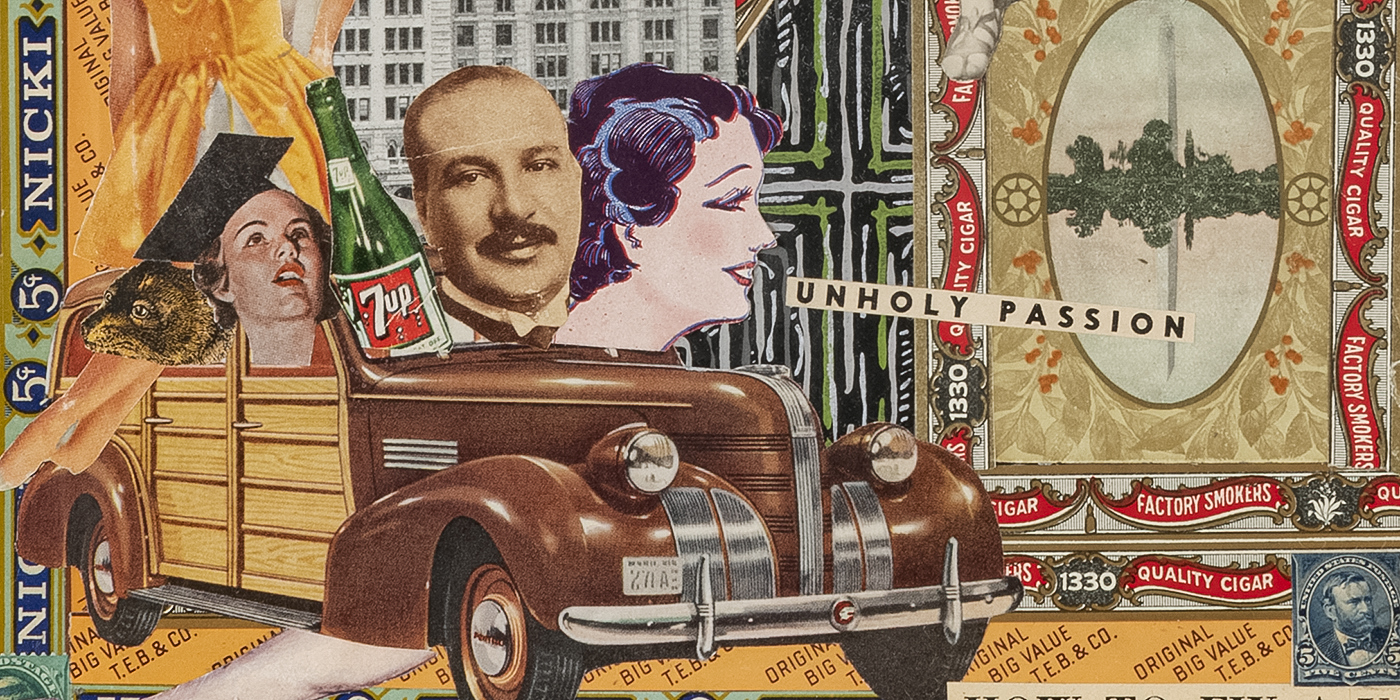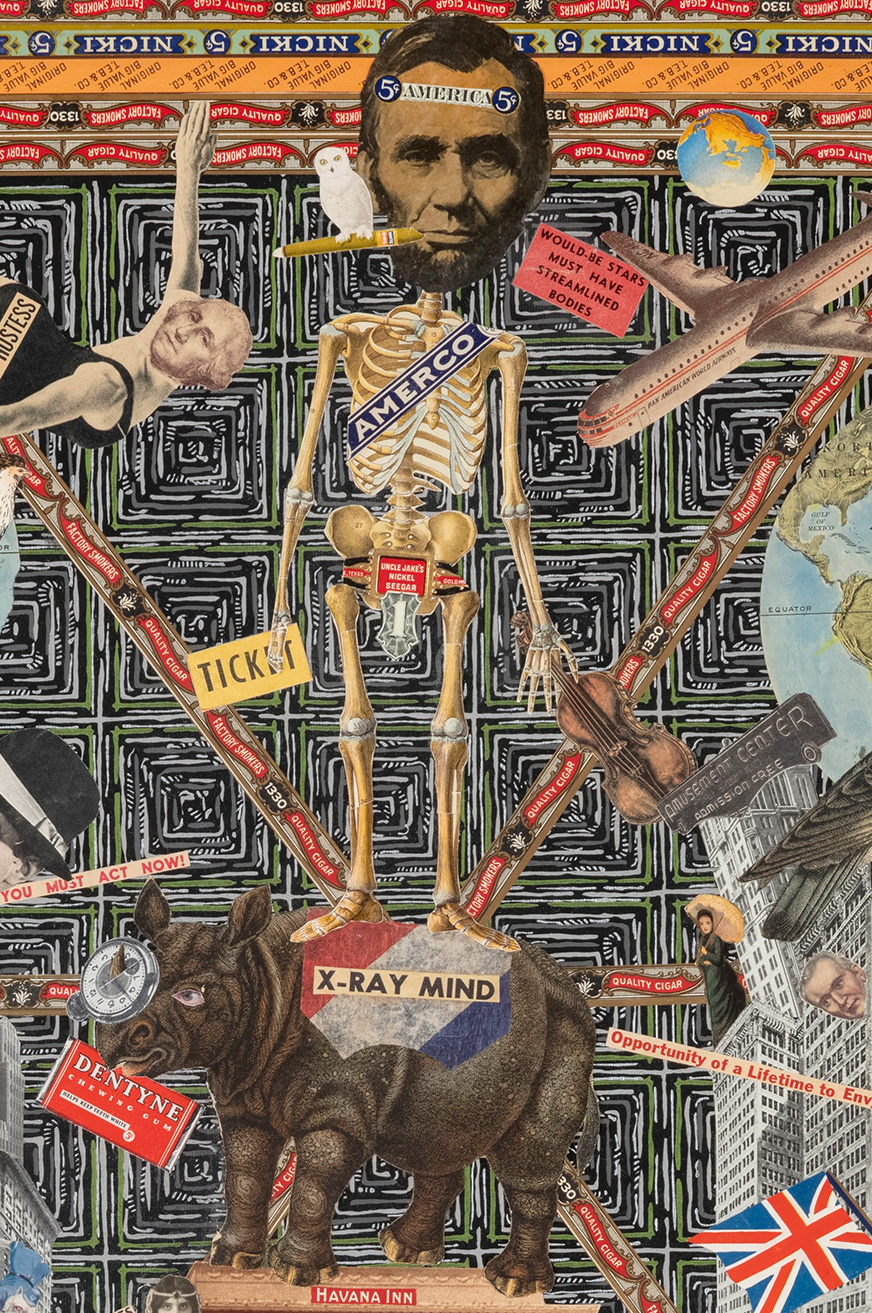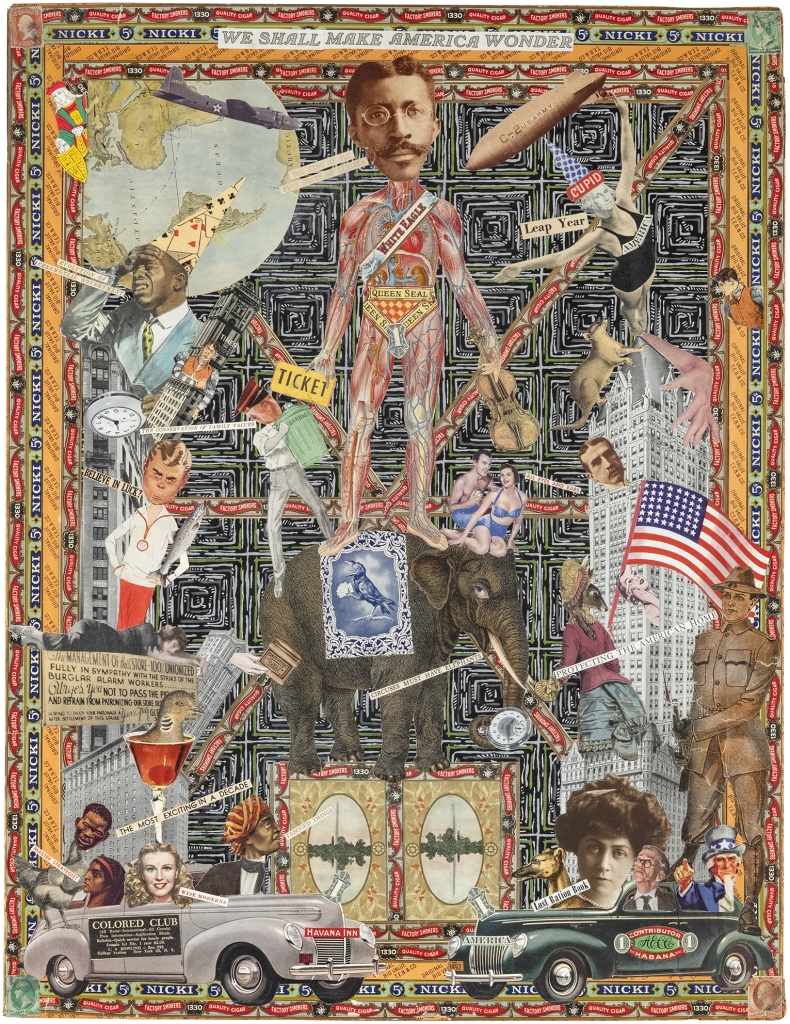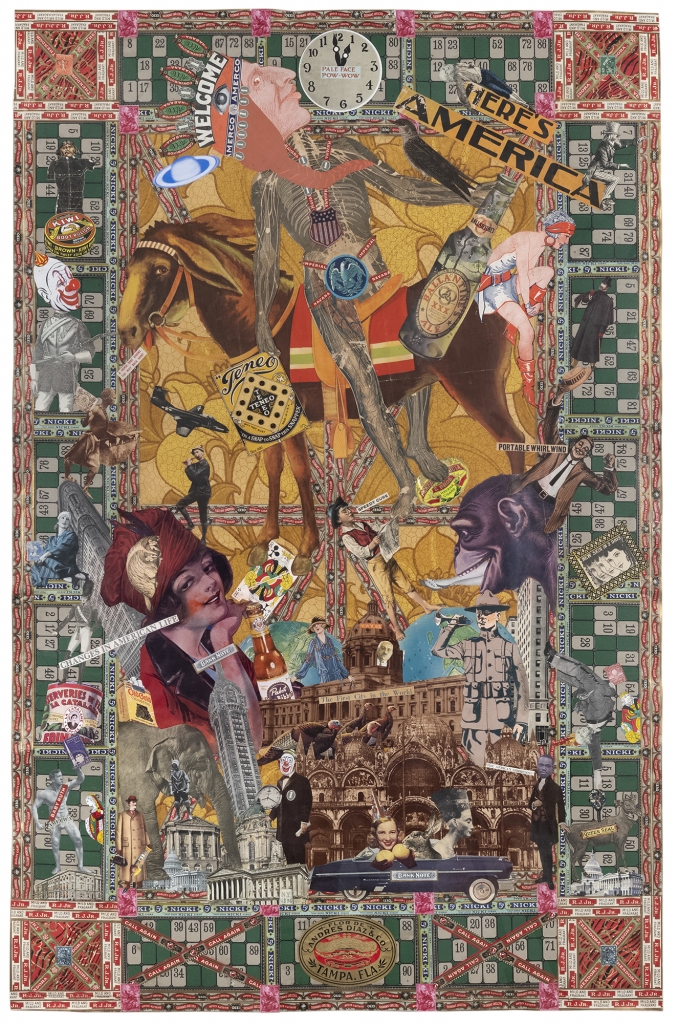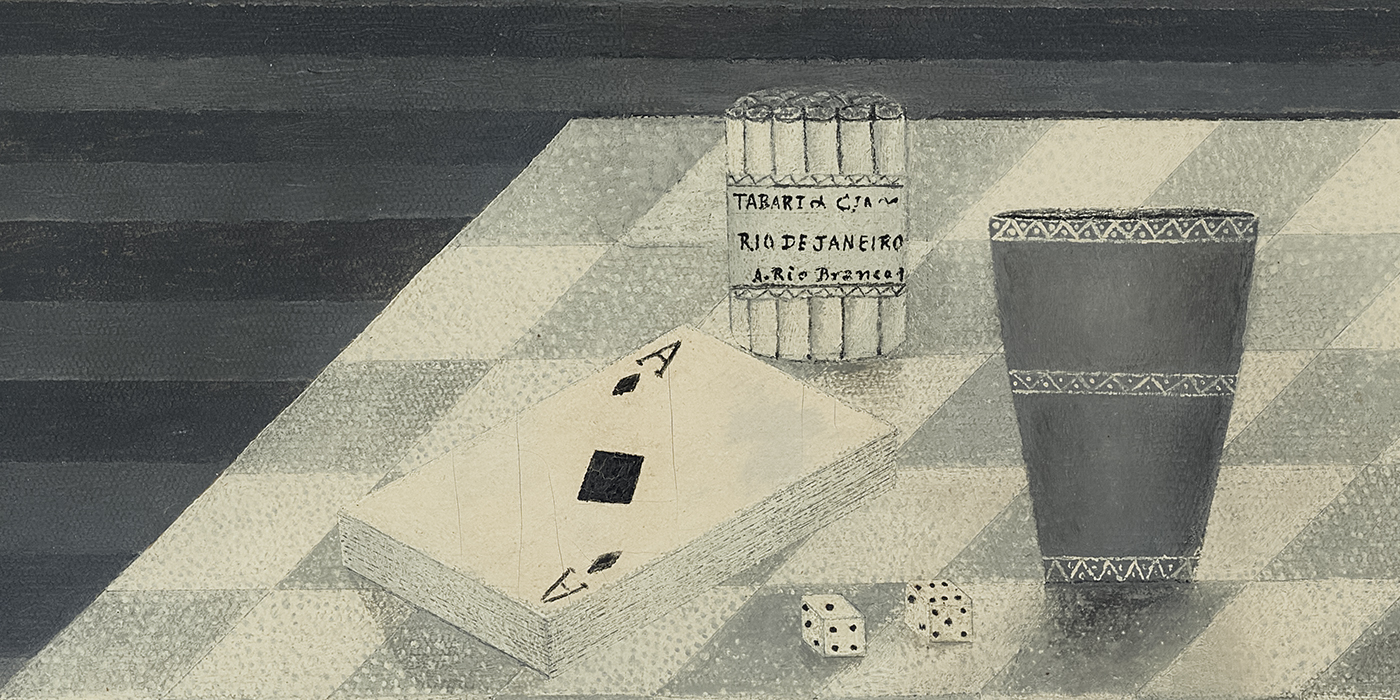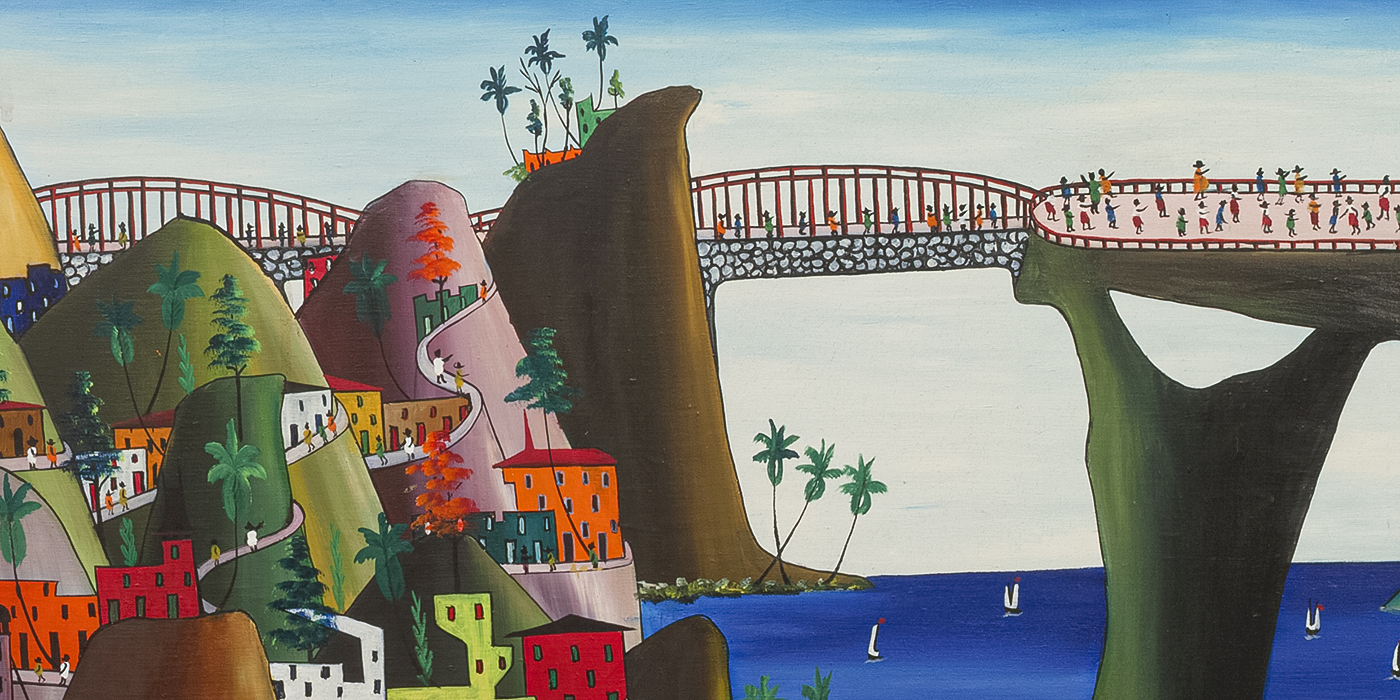Felipe Jesús Consalvos produced a vast body of collages on paper, furniture, musical instruments, and other objects. His compositions combine popular culture iconography and a range of found materials, including photographs, magazine pages, banknotes, and printed matter extracted from the universe of tobacco products, such as cigar bands and box labels. His work speaks directly about his experience as a Cuban immigrant to the United States in the 1920s and of his professional activity as a cigar maker.
Densely collaged, his compositions make use of narrative procedures such as text interspersed with images, the repetition of elements, and the combination of body parts to create uncanny figures – notably, George Washington in drag. These procedures bring his work closer to collages associated with the historiDensely collaged, his compositions make use of narrative procedures such as text interspersed with images, the repetition of elements, and the combination of body parts to create uncanny figures — notably, George Washington in drag. These procedures bring his work closer to collages by artists associated with the historical avant-garde—such as Kurt Schwitters, Hannah Höch, and Joseph Cornell—although there is no evidence that Consalvos was familiar with the work of these artists. However, making collages with cigarette bands is a common vernacular tradition practiced obsessively among collectors and scrapbookers.
Found at a garage sale in West Philadelphia in 1990 by curator Jack L. Lindsey, Consalvos’s oeuvre has been shown publicly over the past fifteen years. Even though little is known about the conditions in which they were created and the intentions that animated his practice, his collages offer a unique lens through which to contemplate important issues on the ecology of images in the modern era, such as consumerism, sexuality, and colonialism.
About the artist
Felipe Jesús Consalvos was born in Havana, Cuba in 1891, and died in Philadelphia sometime in the 1950s or 1960s. In the 1920s, he emigrated to the United States, moving first to Miami and New York before eventually settling in Philadelphia. Consalvos worked for much of his life as a cigar roller; this vocation influenced his artistic practice, as he often used cigar paper for his material and incorporated the iconography of cigar bands into his artworks. Often described as obsessive, his known oeuvre consists of over 750 surviving collages created on paper, found photographs, musical instruments, furniture, and other unexpected surfaces. Many of these artworks combine figures from popular culture, phrases culled from advertising, and Americana-inspired images, which can be related to his experience as an immigrant. Unknown as an artist during his lifetime, his work was first found at a Philadelphia garage sale in the early 1980s. Today, his work is part of numerous public and private collections including the John Michael Kohler Art Center, Sheboygan, WI; the Philadelphia Museum of Art, Philadelphia, PA; the American Folk Art Museum, New York, NY; Harvard Art Museums, Boston, MA; the High Museum of Art, Atlanta, GA; and The Museum of Everything, London, UK.

